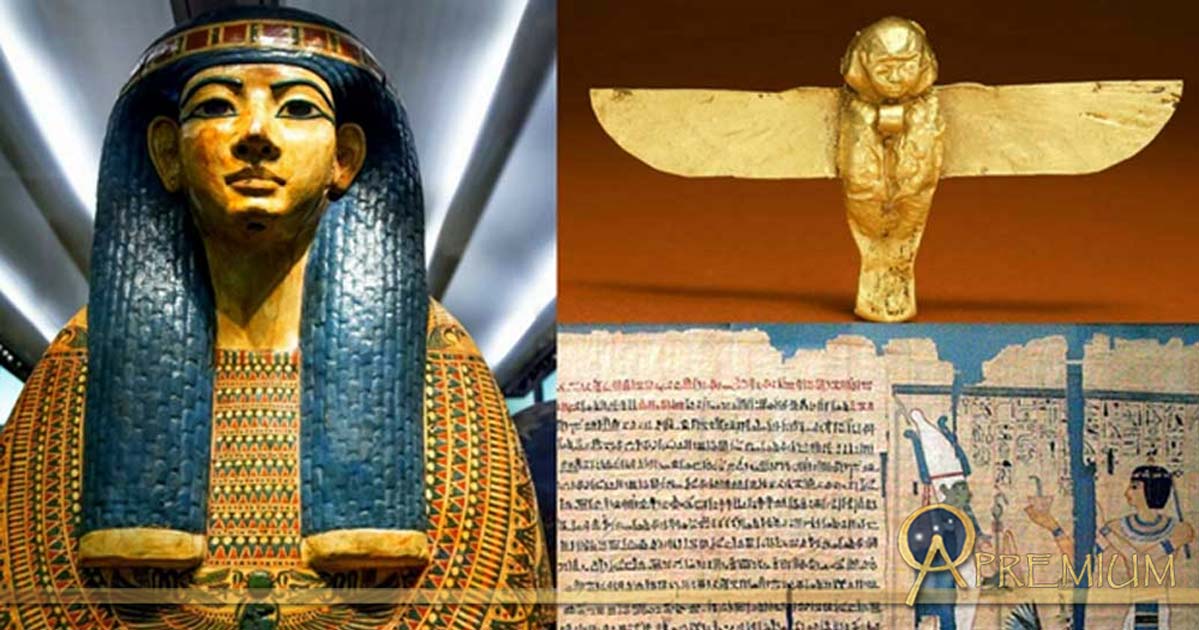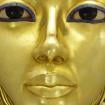Life after Life: In the Quest for Eternity, Death is Only the Beginning – Part I
The ancient Egyptians took great care to prepare for the Afterlife. In fact, they were so meticulous about getting every minute detail in order, that to us they come across as having been obsessed with death. But this is far from the truth; for, they were a practical people who prepared well to encounter all manner of surprises their souls would confront whilst journeying through the Underworld. The Book of the Dead was an invaluable guidebook in their quest to spend eternity in Paradise.

Nespawershefyt (Nes-Amun), a high-ranking official in the temple of Amun at Karnak (Ca. 990-940 BC), was buried in one of the finest coffin sets of its type. It is painted with various scenes and spells from the Book of the Dead. Sadly, Nes-Amun's body has never been found. Fitzwilliam Museum, Cambridge.
PREPARING FOR HEREAFTER
Merely being alive meant little if one did not aspire to lead a life of honor by upholding the virtues of integrity, discipline, dignity and grace. This immaculate philosophy is echoed in a pithy saying on the stela of an official named Mentuhotep: “The monument of a man is his goodness”. However, this was not a call for austerity or a frugal lifestyle, as the Harper's Song from the tomb of pharaoh Intef (Middle Kingdom) reveals:
“Follow your heart and your happiness,
Do your things on earth as your heart commands!
When there comes to you that day of mourning,
the Weary-hearted (Osiris) hears not their mourning,
Wailing saves no man from the pit!
Make holiday, Do not weary of it!
Lo, none is allowed to take his goods with him,
Lo, none who departs comes back again!”

A mural of a blind musician playing a harp, from the tomb of the ancient Egyptian scribe, Nakht (TT52). This representation has raised considerable debate with some believing it shows a blind harpist, while others say the musician has his eyes closed in devotion. (The Yorck Project/Public Domain)
But death was inevitable, and one had to face the eventuality some day or the other. This prompted the ancient Egyptians to contemplate post mortem dangers rather seriously. The real action occurred in tombs, which, far from being considered morbid structures, were glorified for the grand purpose they served: because these rock-hewn marvels of engineering functioned like a machine that helped in the process of rejuvenation and resurrection of body and soul after death; and enabled the deceased to commune with the gods.
For this reason, sepulchers were sumptuously decorated and stocked—even though it was obvious no living being would ever enter its chambers once sealed. “When you think about what you’re going to put in your tomb, view it as though you’re going on a trip to a place you’ve never been before; and you’re not sure what to take. So you pack everything!” says Dr Bob Brier. Once again, the Harper's Song expresses a similar sentiment:
“None comes from there,
To tell of their needs,
To calm our hearts,
Until we go where they have gone!”

Cosmetics chest of Merit, the wife of the royal architect Kha (Eighteenth Dynasty). The well-stocked tomb of this couple who were buried together, was discovered intact by Ernesto Schiaparelli in 1906. Museo Egizio, Turin, Italy.
Apart from stocking the tombs with all that the dead would need in the Hereafter – food, clothing, jewelry, cosmetics, furniture, model tools and even servants (Ushabti figurines) to do one’s bidding – a navigational tool or map was of the utmost importance to journey through uncharted territory. This crucial requirement was fulfilled by the Book of the Dead, the name given to scrolls filled with texts and illustrated with vignettes that were buried with the departed.
This FREE PREVIEW is just a taste of the great benefits you can find at Ancient Origins Premium.
Join us there ( with easy, instant access ) and reap the rewards: NO MORE ADS, NO POPUPS, GET FREE eBOOKS, JOIN WEBINARS, EXPEDITIONS, WIN GIFT GIVEAWAYS & more!
- WATCH: Magick - The International Language of Religion, with Mogg Morgan
- Descent to the Underworld: The Little-Known Practices and Symbols in Ancient Mythology of the Great Below
- The Nile – Its Fertile Past and Its Imperiled Future
Independent researcher and playwright Anand Balaji is an Ancient Origins guest writer and author of Sands of Amarna: End of Akhenaten.
Top Image: Collection of Egyptian Art, design by Anand Balaji (Photo credits: Leslie D. Black), (Public Domain), (CC BY-SA 3.0); Deriv.
By Anand Balaji


















